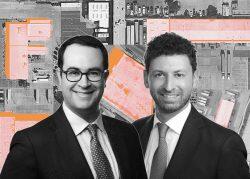If you’re in the market for warehouse space, get in line — and get ready to pony up.
Data released this week by Savills shows the U.S. industrial real estate market lives up to the hype. It is crowded and expensive. Asking rents were up 8 percent last year nationally, and that includes less trafficked locales in flyover country.
Increases varied widely. In Columbus, Ohio, and Phoenix, rents were up 11 percent and 9 percent, respectively. But they jumped 23 percent in Northern New Jersey, which services New York City, the nation’s largest consumer market. That was the nation’s most dramatic gain of 2021.
Other coastal markets mirrored its strength. Seattle’s rents jumped 21 percent, and in Southern California, home to the Port of Los Angeles, the Western Hemisphere’s busiest container port, rents climbed 19 percent.
Chicago and South Florida were not far behind with 17 percent and 13 percent gains, respectively.
The cost of industrial space is spiking largely because there’s so little available, despite developers’ having churned out a huge amount of new product in 2020 and 2021. With e-commerce firms such as Amazon gobbling up warehouse space, vacancy nationwide stood at just 4.4 percent at year-end. Some 579 million square feet were absorbed last year, while 387 million square feet were delivered.
Read more


Higher costs also contributed to rents rising. Prices for industrial inputs such as construction materials, labor and container shipping were up substantially last year.
Industry leaders have attributed the boom in industrial real estate to a confluence of factors: Consumers are not only buying more online but they are buying more, period. On top of that, supply chain dislocation has forced internet retailers to store more inventory as a hedge, generating still more demand for space.
E-commerce companies’ efforts to right-size historically low inventory-to-sales ratios could generate demand for 800 million square feet of additional demand in the near term as the market “snaps back” to normal, serviceable ratios, executives at Prologis, the dominant industrial REIT, said last month.
“I’m willing to bet if there were more supply, there would be more absorption and more demand,” Prologis chairman and CEO Moghadam said during an earnings call in January. “People simply cannot get the space that they need.”
Southern California and Northern New Jersey were the tightest markets at year-end by a wide margin, with vacancy rates of just 1.5 percent and 2.3 percent, respectively.
Savills noted tenants’ growing preference for new space. About 47 percent of the record 908 million square feet leased in 2021 was at buildings constructed in the past two years.
